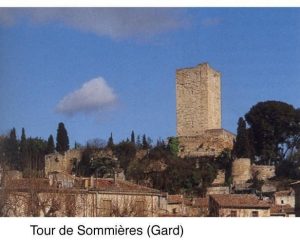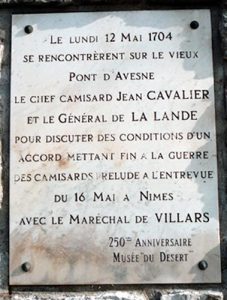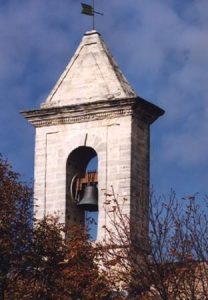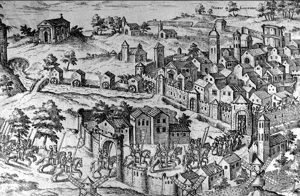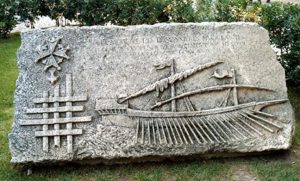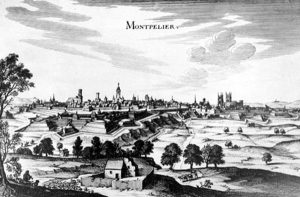Sommières was a Huguenot stronghold
In 1629 after the Alès peace, the castle was used as a prison and a holding place for galley slaves bound for Montpellier and Marseille.
In October 1685, after the abuses of the king’s dragons, the region recanted without resistance.
The Camisards war
In 1693 a revival of the faith developed. Prophesying appeared in 1700 in Vaunage, as it did in the Cévennes region, which took part in the Camisards war (1702-1704).
On 13 August, 1702, Baron Saint-Cosme – a Catholic – was murdered by the Camisard chief Maurel dit Catinat between Uchaud and Boissières.
In 1703, the Camisards slaughtered Catholics in Saturargues and Saint-Sériès. On 13 November Cavalier challenged the royal troops in Nages. But marshal Montrevel took a spectacular revenge on Cavalier on 16 April 1704.
On 12 May 1704 at Pont-d’Avesnes, armistice negotiations started between general La Lande and Cavalier, a preparation to the Villars-Cavalier meeting on 16 May in Nîmes.
On 27 May 1704, the armistice was signed in Calvisson – memorial tablet at the town hall.
Desert assemblies took place throughout the 18th century.
In 1713 in Milhaud, an assembly was discovered, and 17 partakers were sentenced to the galleys.

